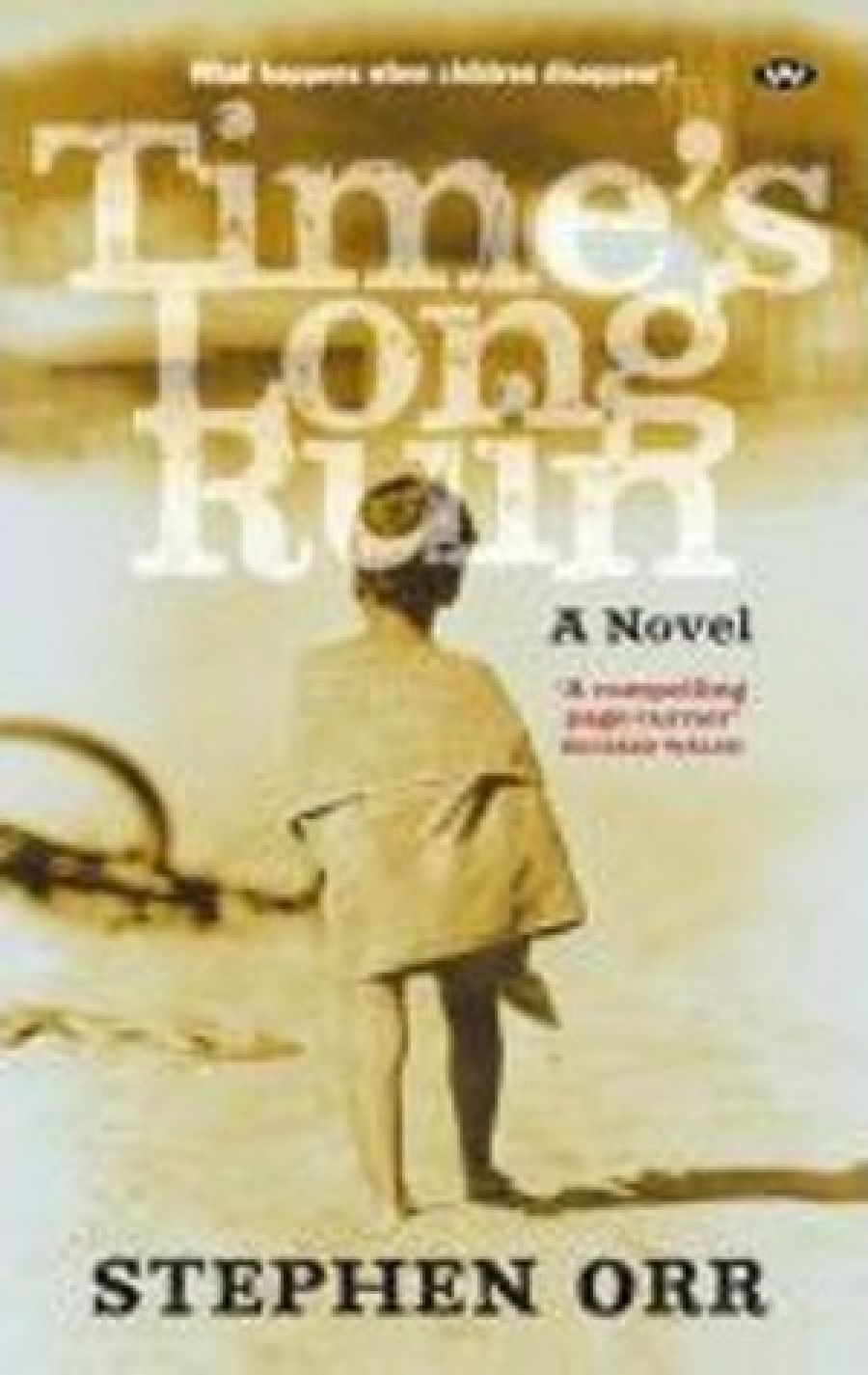
- Free Article: No
- Contents Category: Fiction
- Review Article: Yes
- Online Only: No
- Custom Highlight Text:
Lost children appear (or disappear) everywhere in literature and film: in Alice Sebold’s The Lovely Bones (2002) and Clint Eastwood’s Changeling (2008). Wendy James’s new novel, Where Have You Been?, concerns a lost teenager, and Carmel Bird’s Child of the Twilight (which I reviewed in last month’s ABR) explores the mythic status of the lost child. However, Stephen Orr’s novel Time’s Long Ruin goes to the harrowing core of one of the most disturbing mysteries in twentieth-century Australia – the disappearance of the Beaumont children.
- Book 1 Title: Time’s Long Ruin
- Book 1 Biblio: Wakefield Press, $24.95 pb, 432 pp
Jane, Arnna, and Grant Beaumont left their Somerton Park home on Australia Day, 1966, and caught the bus to Glenelg beach. They never came home and, despite a few sightings, were never found. Orr changes the story slightly: his characters, named Janice, Anna and Gavin Riley, live in Croydon and catch a train to Semaphore beach, further up the coast, six years earlier, though still on 26 January. Orr has retained other elements of historical fact: the visiting clairvoyant; the agonising hoax letter – in slightly altered form. The chief fictional element he introduces is the neighbourhood, peopled by a mixture of characters: the Greek crossing guard and his wife, mourning their own son who drowned years before; the chiropractor with an unsavoury interest in young boys; the shopkeeper obsessed with the children whom he suspects of shoplifting. All this is seen through the eyes of Henry, the Rileys’ nine-year-old neighbour, son of a police detective, a loner with a club foot and a difficult mother.
The first part of the book sets the scene: summer holidays in Adelaide. Henry visits the beach and plays street cricket with the Rileys, retreats to the rabbit hutch to write in his diary, brushes with the local bullies, and has a nasty experience with a chiropractor. The two families go for a caravan holiday to Goolwa. Janice thinks she has discovered Heinrich Himmler living around the corner, and she and Henry spy on him. Life is hardly idyllic, sometimes boring, sometimes irritating. Australia in the 1960s is deftly conveyed, without too much detail.
Henry has a nicely ironic view of the world, and his narration is laconic and dryly witty. He hates sport, not just because of his disability: ‘Sport was for the organised, the neat, the well-groomed, for the fit and getting fitter, for people without faults or blemishes. Sport was for people with no imagination.’ He ponders the behaviour of adults:
I couldn’t work out human beings. None of them acted rationally (except Dad, Con and a few others). I wondered whether I should try and become prime minister, to make some laws, to sort people out: no promises you can’t keep, no moods, no taking things out on other people, no grog. Make sense. The list went on and on.
Henry’s father is his hero, as much as this composed creature induldges in hero-worship, and when the Riley children disappear he is rather improbably allowed to help with the investigation. Then again, the Adelaide community was mobilised in 1966, so maybe the clever son of a detective could plausibly have become involved.
A story with no satisfactory end point is hard to narrate. Alan J. Whit-icker’s book Searching for the Beaumont Children (2006) suffered from this difficulty; he compensated by padding the book with marginally relevant material and a certain amount of myth-mongering. Time’s Long Ruin fares better: Orr has hit on a winning device with his intelligent child narrator. There is some sleight of hand with the point of view. Henry sometimes recounts conversations and events he hasn’t witnessed, though he does explain that much of this is derived, or imagined, ‘from what Dad told me years later’. Orr doesn’t fall into the trap of providing a solution to the mystery: it is not that kind of novel. I don’t think he could object to my revealing that there’s no dénouement or resolution, just Henry growing older, crabbier and more peculiar in the house next to that of the Rileys’, his only friends.
I wasn’t the independent type. I was a funny sort of fella. I’d chop off an arm for a friend, but I hardly ever got that far. I had criteria, and people sensed this. I was a junior version of doesn’t-suffer-fools-gladly, and since this wasn’t the Australian way (and since everyone assumed they were just a little bit foolish) they didn’t bother with me. But if they’d only taken the time … so I was left with my books, and my too-adult view of the world, and soon I would become a sort of sage in corduroy pants.
When this novel won the Adelaide Festival award for best unpublished manuscript in 2008, it was called The Second Fouling Mark. This is a piece of tramways arcana that symbolises everything we’ll never know, and its ultimate unimportance. It is not a bad title, but Time’s Long Ruin (from Edwin Muir’s sonnet ‘The Transmutation’) is better. The theme of this novel is the ravages wrought by years of tension and uncertainty on a circle of family and friends: marriages slowly disintegrating, ambition and energy draining away. Time’s Long Ruin is a fine novel, thoughtful and unsentimental, convincing without being predictable.


Comments powered by CComment